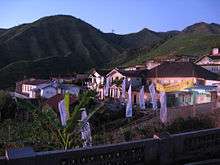Soft light


Soft light refers to light that tends to "wrap" around objects, casting diffuse shadows with soft edges. Soft light is when a light source is large relative to the subject, hard light is when the light source is small relative to the subject.
This depends mostly on the following two factors:
- Distance. The closer the light source, the softer it becomes.
- Size of light source. The larger the source, the softer it becomes.
The softness of a light source can also be determined by the angle between the illuminated object and the 'length' of the light source (the longest dimension that is perpendicular to the object being lit). The larger this angle is, the softer the light source.
Uses of soft light
Soft light use is popular in cinematography and film for a number of different reasons:
- Cast shadow-less light.
- Fill lighting. Soft light can reduce shadows without creating additional shadows.
- Make a subject appear more beautiful or youthful through making wrinkles less visible.
- Supplement the lighting from practicals. This technique is used to perform "motivated" lighting, where all light in the scene appears to come from practical light sources in the scene. Soft light does not cast shadows that would be a giveaway of a supplementary light source.
Hard light
Hard light sources cast shadows whose appearance of the shadow depends on the lighting instrument. For example, fresnel lights can be focused such that their shadows can be "cut" with crisp shadows. That is, the shadows produced will have 'harder' edges with less transition between illumination and shadow. The focused light will produce harder-edged shadows. Focusing a fresnel makes the rays of emitted light more parallel. The parallelism of these rays determines the quality of the shadows. For shadows with no transitional edge/gradient, a point light source is required. Hard light casts strong, well defined shadows.
When hitting a textured surface at an angle, hard light will accentuate the textures and details in an object.[1]
Fall-off
Light intensity tends to drop off over distance. For a point light source, intensity decreases as distance increases. Intensity is proportional to distance−2. For a thin infinitely long light source, intensity is inversely proportional to distance. For a light source of infinite area, intensity does not decrease at all. Generally, a soft light source does not drop in intensity as quickly as a point light source would (as distance increases).
Certain lensed lighting instruments (i.e. Ellipsoidal reflector spotlights) have a good deal of "throw" and do not lose much intensity as distance increases, much like soft light sources. These light sources tend to be more effective at large distances than soft light sources. At large distances, an effective soft light source would have to be very large. The (mostly) parallel rays of such instruments tends to cast hard shadows, unlike soft light sources.
Softness/hardness of various light sources
Most light sources have a non-negligible size and therefore exhibit the properties of a soft light to some degree. Even the sun does not cast perfectly hard shadows.
In "hard" light sources, the parallelism of the rays is an important factor in determining shadow behaviour.
The quality of light can be altered by using diffusion gel or aiming a lighting instrument at diffusing material such as a silk. When shooting outdoors, cloud cover provides nature's version of a softbox.
See also
References
- ↑ An explanation of hard and soft light and its usage in photography, additional text.